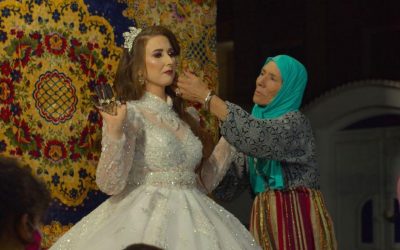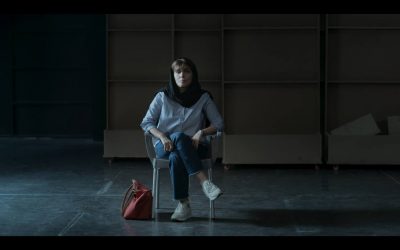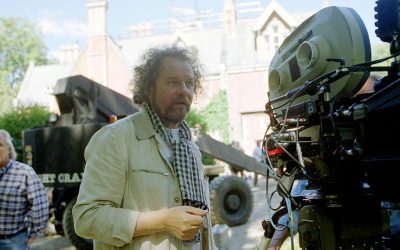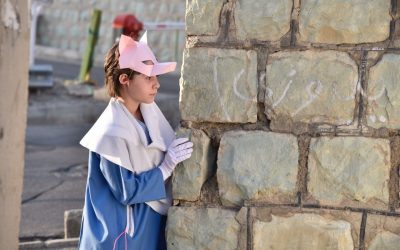By Amin Pakparvar
Libido can be regarded as the emotional force underlying human expressions of love, originating from an individual’s affection toward oneself and subsequently extending to the external world. Loving another person or object represents an expansion of libido into the external realm, to the extent that death or separation from a beloved imposes an end to this capacity for love. In the process of mourning, the libido, having been attached to the lost individual, resists detachment. Mourning entails the emotional acknowledgment and processing of loss; however, since the libido remains bound to the lost person, relinquishing this attachment proves challenging. Nevertheless, grief, though painful, ultimately reaches its conclusion when the mind accepts and transcends the loss. The liberated libido can then be redirected toward new individuals or interests, allowing the individual to reconnect with life. (On Transience, Sigmund Freud, 1915)
On multiple encounters with these seven short films, products of emerging voices in Iranian women’s cinema, I sought thematic connections, searching for a word that could serve as the backbone of this reflection, running parallel to each film, with every piece fitting into it like a bead on a thread, forming a unified whole. At first glance, what binds these films together is the femininity embedded in their authorship, the relative generational affinity of the filmmakers behind the camera, and the fact that they were all produced in the past decade. The other commonality is best encapsulated in the title chosen by the collection’s curator, Mania Akbari: Unsettled Reality, Tomorrow’s Imagination, which I interpret as the act of envisioning the future in a way that liberates us from the turbulence of the present. To understand these films, one must examine the dimensions of this turbulence and ask: From what historical conditions of women’s lives in Iran have these works emerged? What forms of mourning have they grappled with? And in the process of navigating grief, through which apertures have their eyes glimpsed the light?
Beyond the shared background of the filmmakers, one can also trace connections between the characters across these films. The protagonists of these works are primarily independent women from Iran’s urban middle class, women with semi-independent identities who, despite the socio-political constraints imposed on their lived realities, rely on personal agency to navigate their dilemmas and seek meaning in their choices. The Iranian woman in these films moves away from the conventional image of a subjugated object in a patriarchal society; instead, she asserts her autonomy through seemingly minor decisions in her personal life, weighing her free will against the structures that confine her.
 Take, for example, the protagonist of Interlude, directed by Golzar Farzaneh, who ultimately makes a choice, drawing back the curtain, stepping into the light of the stage, and courageously extricating herself from the entrapment designed for her. Through her imagination, she transcends the boundaries imposed upon her, reaching for the impossible. Her dancing body, present on stage by her own volition, serves as a guide to understanding other women in this collection—women who, until the moment of action, remain caught in the anxiety of freedom.
Take, for example, the protagonist of Interlude, directed by Golzar Farzaneh, who ultimately makes a choice, drawing back the curtain, stepping into the light of the stage, and courageously extricating herself from the entrapment designed for her. Through her imagination, she transcends the boundaries imposed upon her, reaching for the impossible. Her dancing body, present on stage by her own volition, serves as a guide to understanding other women in this collection—women who, until the moment of action, remain caught in the anxiety of freedom.
Freedom, in the Kantian Enlightenment sense, is inseparable from autonomy and self-confidence, or, put differently, from stepping beyond the boundaries of safety and kicking away the very supports we have traditionally leaned on. The seeker of freedom is like the child who releases a father’s hand, choosing to see the world through their own eyes and to walk wherever they wish, even if the path ahead is dark and treacherous. In this formulation, the father can serve as a metaphor for tradition. The women depicted in these films are no longer the oppressed, ill-fated figures crushed under the weight of patriarchal order—no longer the buried-alive victims depicted in The Paternal House (2012). Instead, each of these women, relying on an ever-growing sense of individuality, engages in a practice of freedom amid personal and familial struggles. They ascribe meaning to their instinctive choices and, within dramatic circumstances, come to believe in their own free will.
In Homa (2023), directed by Mahdokht Molaei, the protagonist, caught in an escalating tension with her daughter, weighs her decision to stay in or divorce her husband. After a long conversation, she comes to see her daughter as a mirror reflecting the full consequences of her choices. In a space of feminine intimacy, she then touches her daughter’s body, perhaps as if tracing the wounds she carries, under the sunlight. In A Long Walk (2023), by Sonia Sanjari, Mona, who has stepped into darkness after the death of her lover, begins to find new glimmers of light at another man’s gathering. In a moment brimming with hesitation, she ultimately responds with a smile to the new companion. Toranj, in All the Time (2020), directed by Shadi Karamroudi, stumbles forward, uncertain yet hopeful, as she faces a sister who might be contemplating suicide. She pauses to search for the right words to call her back to life, navigating the tension of speaking or remaining silent, and in doing so, reexamines her own personal responsibility in the situation. And in Let’s Talk About It Tomorrow (2023), by Nona Shahriari, Tina, who carries not only a fetus but also the weight of future anxieties, practices her agency by saying no to her husband’s insistence on having a child.
The women in these short films are moving toward autonomy, reflecting on their historically situated condition, one shaped by a break from tradition, each in a way uniquely their own, rooted in the specificity of their present moment. Their pauses at the crossroads of choice, between staying and leaving, speaking and remaining silent, giving birth and choosing not to, are, in themselves, acts of relying on a personal code, of constructing meaning for that code. This autonomy, intertwined with the characters’ constant inner reflection on the significance of their choices, is also exemplified in Without Air (2022), directed by Roya Parsa. The protagonist wrestles with the idea of childbirth as a meaning-making act, her internal monologues revealing her bewilderment in the face of becoming a mother. Her words lay bare the crisis of choice, a crisis that, while the cost of freedom, is precisely what renders freedom both precarious and profound.
I began with Freud and now return to him. In the aforementioned essay, Freud first describes libido as the emotional force that drives one to love and, when the beloved is lost, explains the process through which the individual moves beyond this loss and rediscovers love elsewhere. Ultimately, the individual returns to life, finding love anew—just as a society, after the devastation of war, rebuilds itself, or as mothers who have lost their eldest sons on the battlefield love their newborns. Yet, one could interpret Freud’s insight differently: that the rediscovery of love is, in essence, a form of autonomy. After losing a person, object, or belief to which they were deeply attached, the individual, having passed through mourning, reclaims their freedom and actively chooses new emotional connections. In this act of choosing, they lean on their emerging will and construct new meanings.
Among the films in this collection, A Long Walk (2023) most explicitly follows this pattern. The lights that emerge before Mona’s eyes illuminate the possibility of love in a new form. However, this process of renewal and reconstruction is not confined to Sonia Sanjari’s film. On a broader scale, as these films suggest, modern urban women in Iran, by moving beyond the death of tradition, are distancing themselves from imposed meanings and roles. Through both personal and collective choices, they are in the process of self-determination.
To borrow a Nietzschian language, they are like newborns who will write their own codes and walk upon them, forging new attachments and reimagining the future on their own terms. In this act of imagining, the fragile present is denied, and the reality of the future is surgically reshaped, just as in Falling Up (2022) by Maryam Bakhtiari, where dreams reconstruct reality. In this renewal, we remain inextricably tied to women’s choices in the face of crises and suffering. And as the “Woman, Life, Freedom” movement (2022) in Iran has taught us, it is women’s freedom that makes the freedom of all possible.











